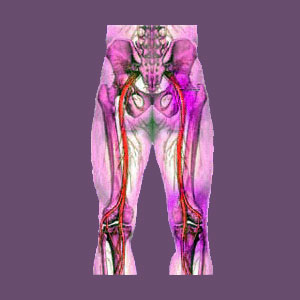
The Freiberg Test for piriformis syndrome is one of several complementary manipulations that can be performed during diagnostic evaluation. Positive results will yield the Freiberg sign, which is expressed as a painful complaint by the patient upon performing the manipulation, which might also be called the Freiberg maneuver.
Freiberg Testing can not definitively diagnose piriformis syndrome by itself or even in combination with other diagnostic protocols. All the test can do is to provide another piece of evidence that can be used by a qualified and experienced caregiver to rule out or confirm a suspected diagnosis of piriformis syndrome involving compression of the sciatic nerve by the muscle.
This dialog provides some important information about the Freiberg maneuver for piriformis syndrome. We will discuss how the test can be performed, its accuracy and some other facts that are crucial to know for patients and care providers alike.
What is the Freiberg Test for Piriformis Syndrome?
The Freiberg Test is designed to reproduce familiar piriformis pain upon passive forced internal rotation of the hip joint. The test is most often performed while the patient is lying on their back (supine) but can also be performed with the patient sitting upright with their legs hanging off an examination table, as well.
Freiberg maneuver is one of several tests that are commonly utilized when evaluating a patient for possible piriformis syndrome. Other tests include the FAIR Test, Pace Test and Faber Test, as well as general physical exam, pain history and onset trigger reporting.
Although there are several varieties of the Freiberg Test, general accuracy is considered fair, with about 55% of patients who are eventually diagnosed with piriformis syndrome reporting pain upon receiving the test.
Freiberg Test for Piriformis Pain Procedure
The examiner can choose to perform several varieties of the test in order to get the most complete picture of the pain response:
If sitting, the examiner can check that the knee is bent at 90 degrees then ask the patient to bring their knees together while simultaneously preventing them from doing so with their hands. If pain is reported, the Freiberg sign is positive.
When supine, the test is similar. The examiner can either prevent the patient from bringing their knee across the body using their hand or they can actually guide the leg across the body while asking the patient to comply and resist in order to possibly produce pain. In supine position, it is best to try the test with the knee bent at 60 degrees and 90 degrees, as well as rotating the hip outwards then trying again at similar angles.
Care must be taken, as this test can be acutely painful for patients with piriformis syndrome. This is the reason why many care providers tend to favor preventing patients from bringing the knee across, rather than forcing it across themselves, since the patient can limit their pain response by simply ceasing to comply with the examiners request.
Freiberg Test for Piriformis Syndrome Factsheet
Piriformis syndrome is a completely subjective diagnosis. It can not be made conclusively under virtually any circumstances. Some care providers in certain healing arts still theorize that the diagnosis is invalid in its entirety.
In order to improve your chances of successful and accurate diagnosis of a piriformis pain syndrome, it is best to get several opinions from different types of care providers. Since no imaging study will conclusively diagnose piriformis syndrome either, the value of CT and MRI testing is controversial, but we still recommend the test when it is made available, since it can help to determine if the patient may have a structural atypicality wherein the sciatic nerve might run through the muscle or around it in an unusual fashion.





